Do you like excitement and things that make your heart race? Are you in awe of those winged wonders we call Honey Bees…or do they scare you to death? Would you like to come face to face with 10,000 of them, be the one responsible for introducing them to a new home and welcoming them to the neighborhood? Could you stand it when dozens landed on you, circled around you, their buzzing drowning out all other sounds?
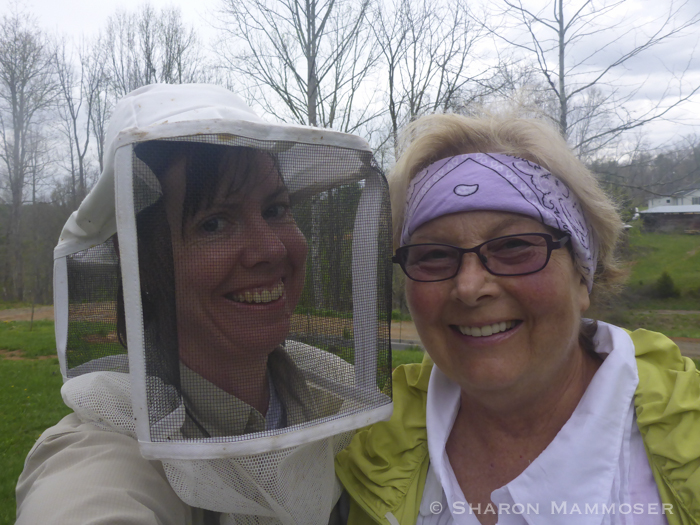
On a cloudy day recently I got to answer all of these questions with a firsthand experience introducing two honey bee colonies to their new hive.
What a thrill! Wow, it was exhilarating!
My friend Bea, who has been a bee keeper for three years invited me along to pick up “the girls,” as she calls them. This because it was a harsh winter and two of her three hives did not survive. We drove to a small building beside the road outside the town of Saluda, hopping out and entering the open door to find ourselves looking at row after row of bees stacked in wooden crates, the front and back of their cages covered with wire mesh. The room 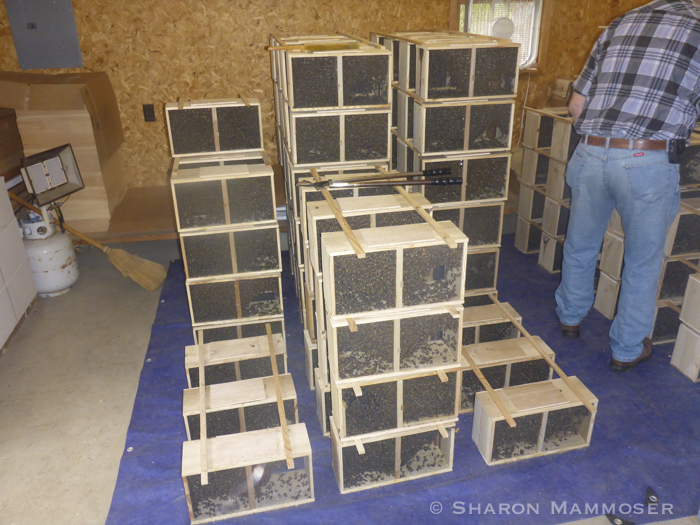 hummed with the sound of buzzing bees and dozens of loose bees flew around, landing on random surfaces in a flurry of activity. Bea payed for her two packages–each roughly 3 pounds of bees. Each pound is about 3500 bees so in all, about 10,500 bees, including the queen, several attendants and many workers. All female. And all moving around creating noise.
hummed with the sound of buzzing bees and dozens of loose bees flew around, landing on random surfaces in a flurry of activity. Bea payed for her two packages–each roughly 3 pounds of bees. Each pound is about 3500 bees so in all, about 10,500 bees, including the queen, several attendants and many workers. All female. And all moving around creating noise.
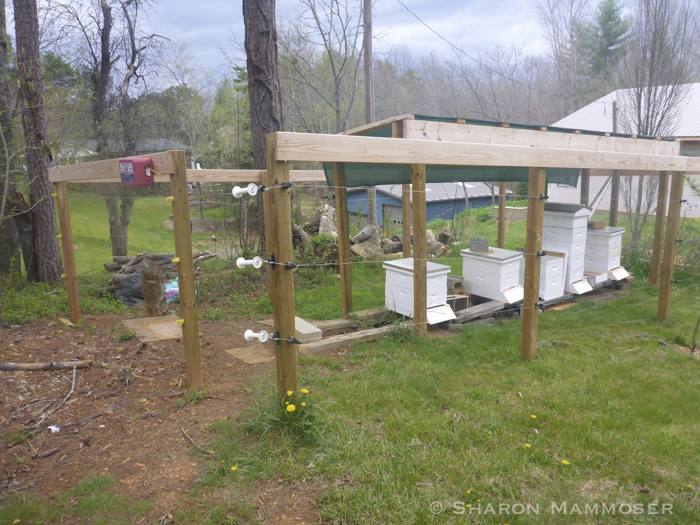 We put them in the back of the car and headed off, driving north to her two-lane road where mountains feather off in the distance past rolling hills dotted with houses and farmer’s fields.She has a big backyard with a little area set aside for her honey bee hives. It is surrounded by an electric fence to keep out the bears–who would happily raid her hives and eat the honey if given the chance.
We put them in the back of the car and headed off, driving north to her two-lane road where mountains feather off in the distance past rolling hills dotted with houses and farmer’s fields.She has a big backyard with a little area set aside for her honey bee hives. It is surrounded by an electric fence to keep out the bears–who would happily raid her hives and eat the honey if given the chance.
First we readied the hives for their new residents, gathering necessary tools, new frames and firing up the smoker. Bea climbed into white rubber boots, followed by her white bee suit and head gear, plus gloves. My gear was more simple–I tucked my socks into my light colored pants, put on some gloves and the head net that would protect my face. Then we were ready!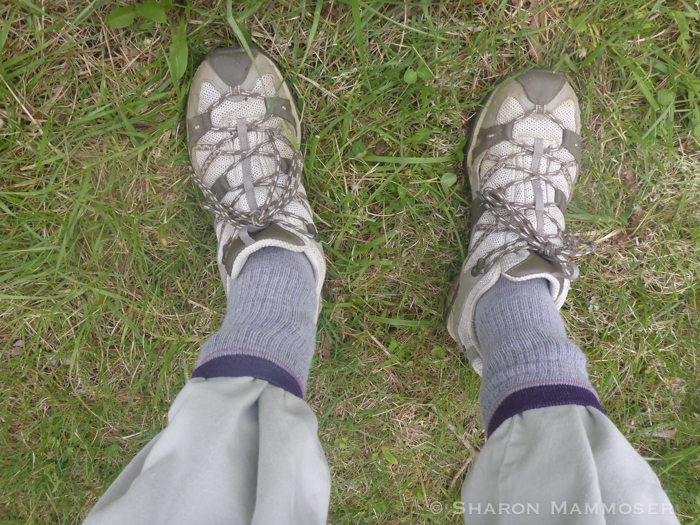
Bea did the first box of bees while I took pictures and watched from only a few steps away. The sound of the bees buzzing was impressive. She cut the fastener and then lifted out the small container holding the queen and surrounded by dozens of swirling, whirling, buzzing worker bees. The box has an opening blocked with a sugary substance and then a cork at the end. Bea cut the cork, exposing the cotton-candy-like substance. When in the new hive the worker bees will eat through the candy, releasing the queen so she can go about
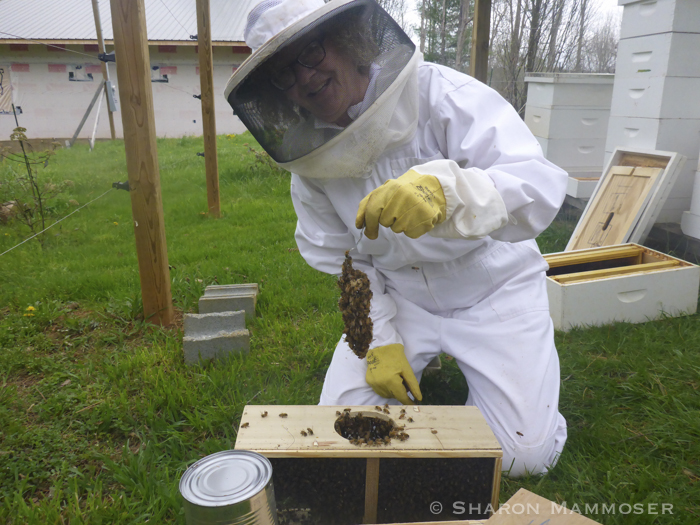
her business– laying eggs, laying eggs and then laying a few more eggs. Each day the queen can lay up to 2000 eggs! In her lifetime of 3-5 years she might lay 1,000,000 eggs! (Read more HERE.)
Bea shook the box filled with buzzing bees into the empty frame, then went about filling it with ready sheets. Of course all this time the bees are swirling around, landing on her, looking at her, crawling on her…She added the queen’s container to the hive and put the cover on it. With a smile. Whew.
Then she turned to me and asked if I wanted to do the next one. Me? I thought, I don’t 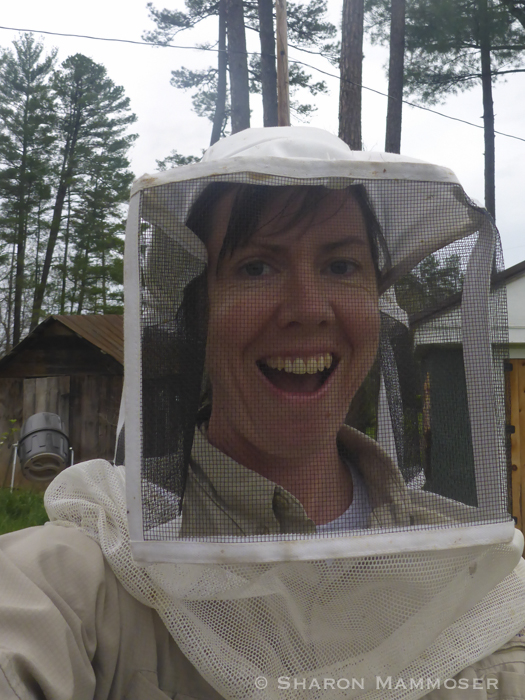 even have on any proper gear! But of course this was a great chance to try something new and the buzzing bees going about their business did not scare me (much.) I knew they were not likely to sting me unprovoked. So I smiled and said, “Of course! I’m ready.” And I was.
even have on any proper gear! But of course this was a great chance to try something new and the buzzing bees going about their business did not scare me (much.) I knew they were not likely to sting me unprovoked. So I smiled and said, “Of course! I’m ready.” And I was.
She talked me through the same steps I’d just watched her do. It was exhilarating with all of those bees surrounding me. It was not hard, but I did try just to BE in the moment… with the thousands of buzzing BEES! I did my best to be gentle. When installing them to the new hive it is easy to see how some can get crushed as you need to put things in places where they are and they don’t really like to be told to move. Or listen when you tell them. I did not get “kissed” as Bea calls it. (Someone else might say stung)
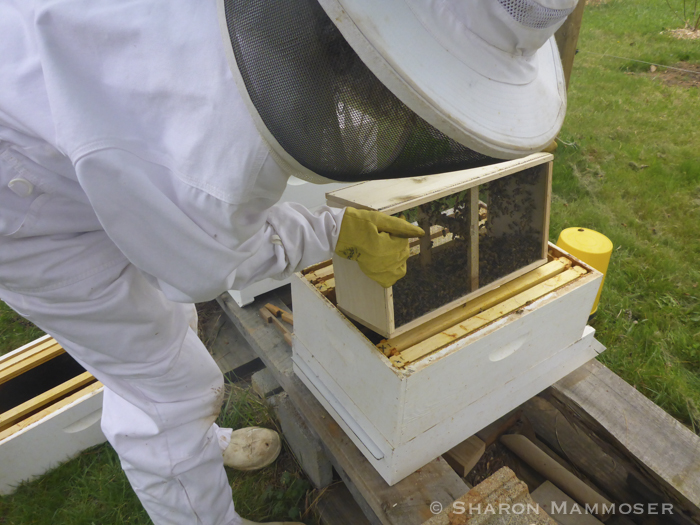
Woo hoo! Dumping the swirling mass of bees into the new box was the most exciting moment! So many bees all around me. Bees have fascinated me my entire adult whole life (was afraid of them as a child!) And now I was having this intimate encounter with them.
Bees these days are facing IMMENSE challenges. (Read more about those here: EPA, EcoWatch, National Geographic, USDA, Time)
Honey bees pollinate:
Almonds, apples, apricots, avocadoes, blueberries, boysenberries, cherries, citrus, cranberries, grapes, kiwifruit, loganberries, macadamia nuts, nectarines, olives, peaches, pears, plums, prunes, raspberries, strawberries, asparagus, broccoli, carrots, cauliflower, celery, cucumbers, cantaloupe, honeydew, onions, pumpkins, squash, watermelon, alfalfa hay, alfalfa seed, cotton lint, cotton seed, legumes, peanuts, soybeans, sugar beets and sunflowers.
Wow! Talk about a long list. Imagine what things would be like without honey bees.
Special thanks to Bea for inviting me along and giving me the honor of starting one of her new hives! If you want to see more pictures check out the slide show below. To learn more about HONEY BEES, click HERE to read a post about 10 things you may not know about these amazing animals!


